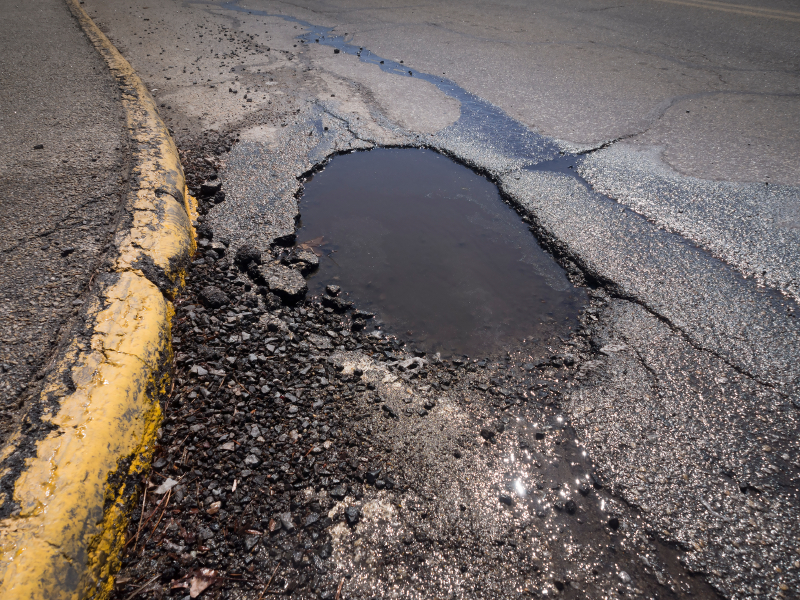Tech That Protects Cars Against Potholes? What Students in Auto Body Repair Courses Should Know

Every year, vehicle damage caused by potholes costs Canadian drivers hundreds of thousands of dollars in repairs. However, automotive giant Ford may have found a solution that will give people fewer reasons to visit their local auto body shop. Ford recently announced that it will make its pothole detection technology a standard feature on one of its most popular models: the Fusion sedan.
This new technology works to keep a car’s wheels from dropping into potholes as it travels over them. This way, a car’s tires only make contact with the edge of potholes, which is much less harmful to the car.
If you’re planning to pursue a career in auto body repair, there’s no doubt you’ll see your fair share of customers coming into the shop for pothole-related repairs. Read on to learn which ways vehicles can be damaged by potholes, and find out how Ford’s new technology works.
An Experienced Auto Body Technician Has Seen Tons of Pothole Damage
One of the worst things about damage that’s caused by potholes is that it is nearly unavoidable. In Canada especially, potholes are everywhere—and they’re not always easy to spot. For example, a driver can be heading down a street while it’s raining, and what looks like a small puddle could turn out to be a deep pothole filled with water. Once you start your career in auto body repair, some of the most common damages you’ll see include dents, cracks, and paint scratches around the lower panels and wheel wells.
Drivers who make it out of a pothole incident with just a few scratches and small dents are actually quite lucky. Sometimes the damages are more extensive. Some examples include:
• Exhaust system damage
• Punctured tires and damages rims
• Suspension damage
• Steering system and wheel misalignment
Driving through a pothole puts a disproportionate amount of weight on a tire, which increases the impact as the tire rolls through the pothole. The deeper the pothole is the bigger the impact will be. This means there’s a greater potential for damages and repair costs.

Ford’s Pothole Protection Tech: A Guide for Students in Auto Body Repair Courses
Now that you understand how pothole damages happen, you can see how Ford’s technology, which keeps tires out of potholes, could be very appealing to most Canadian drivers.
The new system—which will be fitted to the 2017 Fusion—works by using 12 high-res sensors that scan the environment to detect potholes. When a pothole is detected, the system sends a signal to new computer-controlled shock absorbers which keeps the wheels from dropping down into the hole.
What’s interesting about the new system is that softer shocks are usually associated with a smooth ride on bumpy roads. In this case however, the system keeps dampers as stiff as possible to prevent the wheel from being pushed down into a pothole.
Students in auto body repair courses might know that Ford has already had some success with this technology in several of its luxury Lincoln models, as well as its big Expedition SUV. By adding it to the 2017 Fusion, the company hopes to reach a much wider market.
See a demonstration of Ford’s new automotive technology:
Are you interested in becoming an auto body technician?
Visit ATC to learn more about our training programs or to speak with an advisor.

